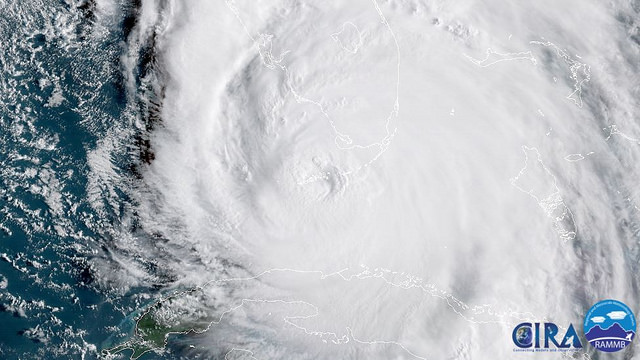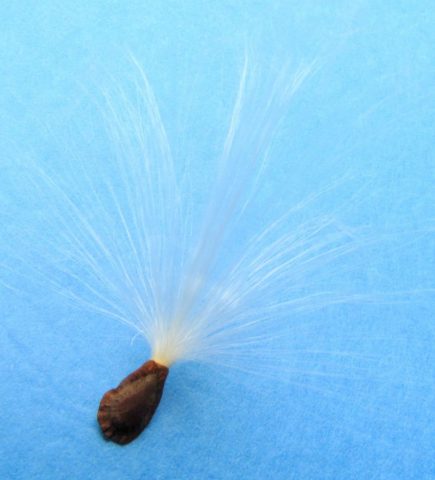How hurricane winds help move plants
Pictured above: Hurricane Irma crosses the Keys before making a second U.S. landfall at Marco Island south of Naples. Photo by CIRA
What did Hurricane Irma’s high winds mean to the spreading of plants? Will we see more wildflowers and exotics in different places as a result? Maybe. The answers depend on a variety of factors.
The big blow of a hurricane has the capacity to move seeds of many sizes. In fact, wind is plants’ No. 1 transportation “expressway,” and they have honed their seed characteristics through thousands of years to take full advantage of hitching a ride.
Among the wind-catching features displayed are feathery pappus, like the soft fuzz seen on milkweed seeds. Orchid seeds are as light as dust and easily travel great distances on wind, and lovegrass seed stalks tumble like tumbleweeds, depositing seeds as they are blown about.
Propelling seeds well beyond the mother plant allows a species to colonize in new places, escape pests and lessens inbreeding. But germination isn’t a sure thing when seeds reach their final destinations. Many variables come into play, such as plant type, seed traits, and the habitat into which the seed is deposited. Some travelers may germinate quickly if conditions are right, while others lay in wait, becoming part of the site’s soil seed bank.
Creating new opportunities: Here comes the sun
Hurricanes help create at least one favorable condition — sunlight — by knocking down trees and thinning canopies. This creates new opportunities for understory plants and the soil seed bank. When light, temperature and moisture conditions align, dormant seeds in the soil may germinate.
“Some of these plants, when woods are opened up, get a chance to express themselves,” says Nancy Bissett, a horticulturist, restoration ecologist and botanist who owns The Natives Inc. She noticed such a change after 2004’s trio of hurricanes opened up a wooded canopy on her Polk County property. “I saw things comes up that I haven’t seen in years and years, like Joe-pye weed (Eupatorium purpureum).” The seeds were there, just waiting for the right conditions.
Hurricane-driven seeds can travel hundreds of miles to take root in places that they’ve never been before. Dr. Loran Anderson, Florida State University professor emeritus, has witnessed this in the field first-hand.
“Some years ago, I found two small, separate populations of Pineland twinflower (Dyschoriste angusta) in very remote parts of St. Marks Wildlife Refuge in Wakulla County,” he says. “This species is found in nearly all counties from Lake Okeechobee southward with records from Highlands, Polk and Hernando counties also. At that time, I surmised seed or small portions of plants bearing capsules had been deposited in Wakulla County by hurricane-force winds . . . that site being very close to the Gulf coast and many, many miles from the peninsular populations.”
Unfortunately, hurricane winds also spread the seeds of invasive and exotic plant species. For instance, the seeds of Cogongrass (Imperata cylindrica), a notorious pest plant, are easily carried by the wind, as are the spores of Old world (small-leaf) climbing fern (Lygodium microphyllum), which has steadily worked its way north from South Florida.
Patricia Burgos, Lake County Water Authority’s land resources director, says her staff is “keeping their eyes open for new areas of infestation and new species that may have been blown or carried by the hurricane.”
“I am expecting that Hurricane Irma will have a lasting effect on public lands, demonstrating a one-two punch — damage from the initial storm and then lasting damage from altered natural communities and invasive infestations,” she says.
Help teach children about traveling seeds and all things native wildflower — download the Florida Wildflower Foundation’s Wild About Wildflowers! Activity Guide now.


